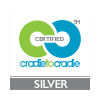Grey Marble
Hygienic nonporous material with a tenaciously wear resistant surface. Simple maintenance requirements that involve no finishing, waxing, buffing or stripping. Produced with rapidly renewable & natural raw materials, PURLINE is GreenGuard Gold and Cradle to Cradle Silver certified. The only flooring that can endure the extreme demands of healthcare and public buildings produced with bio-polyurethane.

Material Composition
Specifications
| Color | Gray, Stone |
|---|---|
| Format | Tile |
| Dimensions | ~19.5" x 39" |
| Thickness | 2.55 mm |
| Weight | 0.74 lbs/sqft |
| Warranty | 15 year Limited Warranty |
Sustainability and Wellness

















